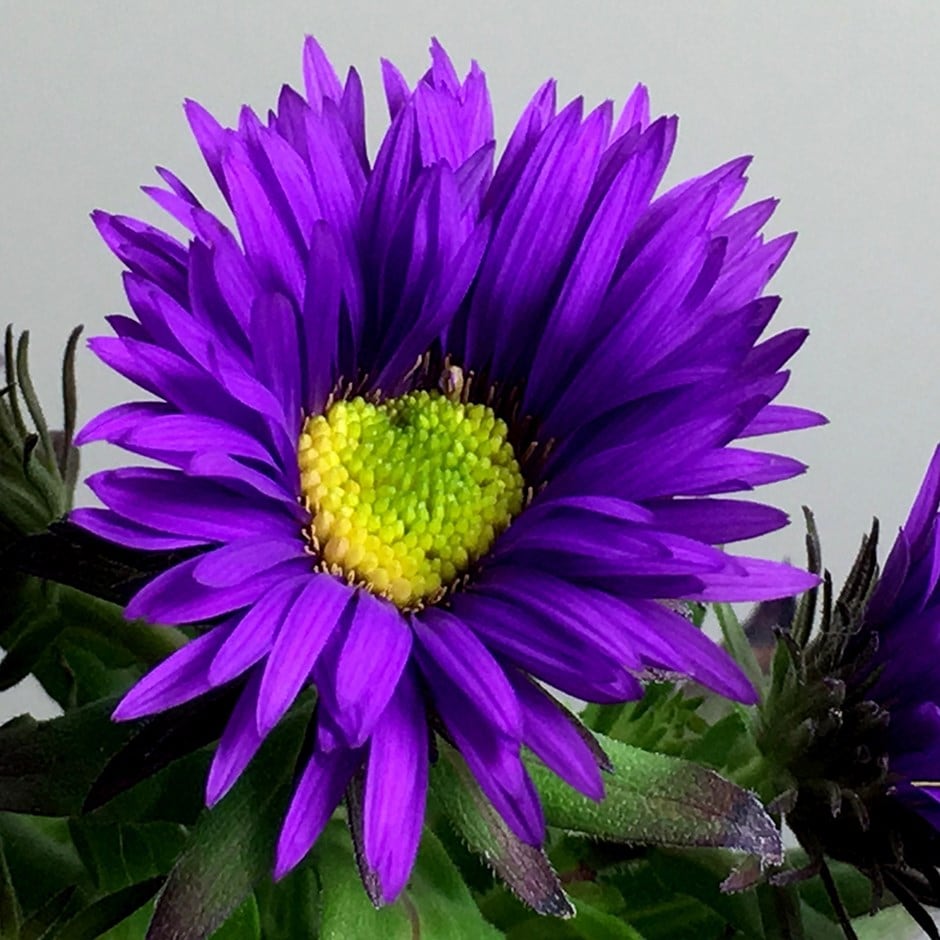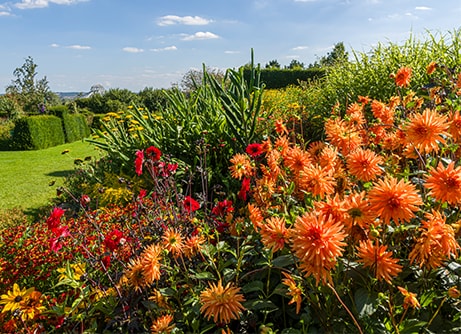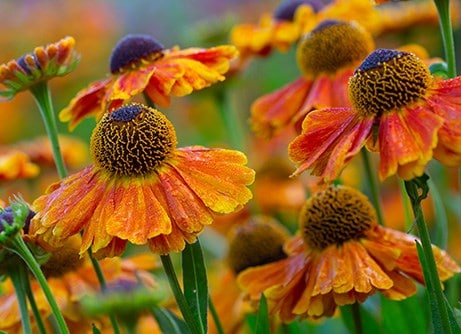
A compact variety with violet-purple flowers that have yellow centres from August to October and lance-shaped, mid-green leaves. This is a pretty Michaelmas daisy that will brighten up a mixed or herbaceous border after other perennials have done their bit. It will also flourish in both sun or dappled shade.
How to care for Symphyotrichum novae-angliae Purple Dome:
Choose a sunny location to get the best flowering display—this type of aster performs best with at least 6 hours of direct sunlight per day.
Plant in moist but well-drained, loamy soil that has been improved with organic matter such as compost or well-rotted manure. While it tolerates a wider range of soils, avoid prolonged waterlogging.
Allow 45-60cm (18-24in) spacing between plants to support strong air circulation. Although Symphyotrichum novae-angliae is more mildew-resistant than S. novi-belgii, spacing still helps maintain healthy growth and shape.
Staking may be necessary for taller cultivars, particularly in exposed spots. Use twiggy prunings or slim supports early in the season before the stems get tall.
Pinch back stems when they reach about 15-20cm (6-8in) to encourage denser, bushier plants. This isn’t essential but helps control height and increase flowering. Removing spent flowers can prolong blooming.
These asters naturally hold their flower heads well and don't close at night, making them a reliable late-season pollinator plant.
Cut back old growth to ground level in late winter or early spring, once the worst of the frosts have passed. The spent stems provide winter interest and shelter for wildlife.
Apply a mulch of 5-7cm (2-3in) in spring to conserve moisture and keep weeds down. Avoid covering the crown directly.
Plant in moist but well-drained, loamy soil that has been improved with organic matter such as compost or well-rotted manure. While it tolerates a wider range of soils, avoid prolonged waterlogging.
Allow 45-60cm (18-24in) spacing between plants to support strong air circulation. Although Symphyotrichum novae-angliae is more mildew-resistant than S. novi-belgii, spacing still helps maintain healthy growth and shape.
Staking may be necessary for taller cultivars, particularly in exposed spots. Use twiggy prunings or slim supports early in the season before the stems get tall.
Pinch back stems when they reach about 15-20cm (6-8in) to encourage denser, bushier plants. This isn’t essential but helps control height and increase flowering. Removing spent flowers can prolong blooming.
These asters naturally hold their flower heads well and don't close at night, making them a reliable late-season pollinator plant.
Cut back old growth to ground level in late winter or early spring, once the worst of the frosts have passed. The spent stems provide winter interest and shelter for wildlife.
Apply a mulch of 5-7cm (2-3in) in spring to conserve moisture and keep weeds down. Avoid covering the crown directly.
Flowering period:
- Jan
- Feb
- Mar
- Apr
- May
- Jun
- Jul
- Aug
- Sep
- Oct
- Nov
- Dec
Eventual height:
0.6m
Eventual spread:
0.6m
Position:
Full sun / light shade
Rate of growth:
Fast-growing
Soil:
Moderately fertile, moist but well-drained soil, or peat-free general purpose compost
Hardiness:
Fully hardy
-
This perennial dies back to below ground level each year in autumn, then fresh new growth appears again in spring.
Product options

3 × 9cm pots
was £19.99
now £11.99
£4.00 each
In stock
(shipped within 2-3 working days)
(shipped within 2-3 working days)

9cm pot
was £9.99
now £5.99
In stock
(shipped within 2-3 working days)
(shipped within 2-3 working days)

2 litre pot
was £19.99
now £15.99
In stock
(shipped within 2-3 working days)
(shipped within 2-3 working days)
1
Delivery options (pick your preferred option at checkout)
Standard Delivery£5.99
Named Day Delivery£10.99








